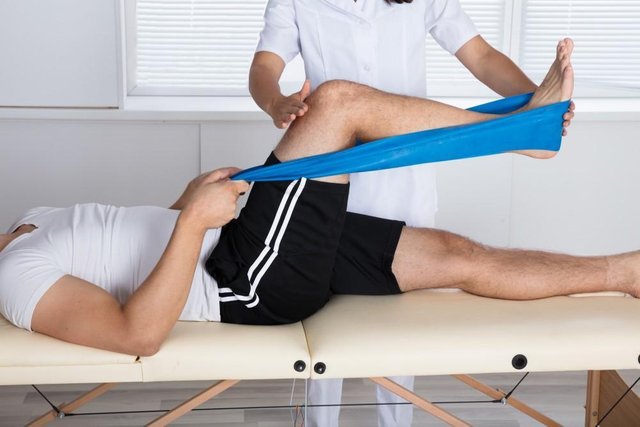
After your total hip replacement (THR), you will most likely see a physical therapist. They may come by in the hospital room right after your surgery. You might or might not need acute or sub-acute rehab, or you may simply be discharged from the hospital and sent home. In either case, physical therapy may help you restore your normal lifestyle. Outpatient physical therapy is typically the last step before returning to full function after a total hip replacement.
By the way, if you only have hip pain and have not undergone THR surgery, you may benefit from physical therapy to learn particular exercises and strategies for managing your problem.
1. Physical Therapy in the Hospital
A physical therapist will most likely come to your hospital room right after your THR surgery. They can help you assess your overall hip precautions and begin some simple exercises to increase your hip range of motion (ROM) and strength.
Following a THR, you will most likely need an assistive device like a conventional or wheeled walker for movement. Your physical therapist can check that your equipment is the suitable size and show you how to use it appropriately.
The THR hospital stay is typically one night, although this varies by patient, with some requiring two or three days after the treatment. Your physical therapist will most likely work with you every day at the hospital.
2. Acute and Sub-Acute Rehabilitation
Hopefully, after a few days in the hospital, you will be ready to return home. Mobility issues may prohibit you from returning home immediately. In this case, you may be sent to a sub-acute rehabilitation hospital to keep working with a physical therapist (among other rehab professionals) to regain basic functional mobility.
Physical therapy courses at the sub-acute rehab hospital will likely be more severe than those that you had right after surgery. Many sub-acute hospitals require physical therapy hip exercises to be held twice a day.
Your therapist at the sub-acute rehab facility will continue to work with you to enhance your hip range of motion and strength, as well as to advance fundamental functional mobility skills such as walking, dressing, and climbing stairs.
The primary purpose of the sub-acute rehab is to help you restore safe functional mobility so you can return home.
3. Home Rehabilitation
When you return home from your THR operation, you may benefit from home physical therapy to keep developing your functional mobility and strength.
Your home care physical therapist can show you how to safely climb stairs, get in and out of bed, use an assistive device to walk, and what to avoid for a while. Your physical therapist can assist you in transitioning from using a walker to a quad or standard cane for walking.
Home care physical therapy following THR is typically intended for those who are unable to leave their homes due to travel restrictions. If you have family or friends who can drive, you can bypass home physical therapy and go straight to outpatient physical therapy.
4. Outpatient Rehabilitation
The final step in your THR rehab process is physical therapy at an outpatient facility. There, you will keep working on increasing your hip ROM. Advanced hip strengthening exercises can be undertaken, with an emphasis on improving balance and proprioception.
While doing outpatient physical therapy, you may use a stationary bicycle or a treadmill to enhance your muscle endurance and walking abilities. Your physical therapist will also reinforce your whole hip precautions.
By the end of your THR outpatient physical therapy, you should be able to walk normally without using any assistance devices. Your discomfort should be under control, and you should be able to return to normal activities.
Conclusion
A total hip replacement can be a painful procedure that makes regular activities like walking and clothing challenging. By working hard in rehab every step of the way, you may be able to rapidly and safely regain your prior level of function and mobility.